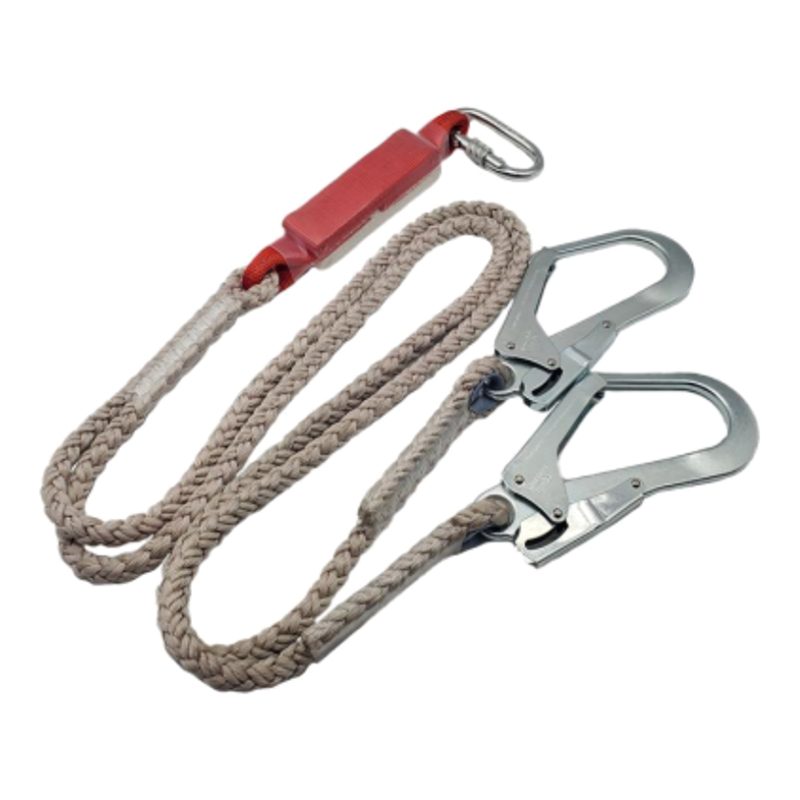When discussing fall protection, many users naturally focus on the safety rope itself, but one crucial component often overlooked is the shock absorber. Whether integrated or standalone, shock absorbers are specifically designed to reduce the impact force generated during a fall. Without this vital element, even the most durable safety rope could transfer dangerous energy directly to the worker’s body, potentially leading to serious injury. That’s why understanding how shock absorbers function and when they are necessary is key to building a complete, reliable fall protection system.
A typical fall from height involves not only vertical distance but also sudden deceleration, and this is where shock absorbers perform their essential task. When a fall occurs, the shock absorber extends, slowing down the fall gradually rather than stopping it abruptly. This process significantly reduces the arresting force on the worker’s harness and, by extension, the human body. In controlled tests, shock absorbers have been shown to cut the peak impact force from over 10 kN to below 6 kN, which is within the safety limits set by global standards such as EN 355 and ANSI Z359.
However, not all work environments require a shock-absorbing safety rope. For instance, in restraint systems—where the worker is prevented from reaching a fall hazard zone—there is no free fall, so a shock absorber is not necessary. On the other hand, in fall arrest scenarios, especially where there is potential for a free fall greater than 1.8 meters, the use of a shock absorber is mandatory. This is particularly common in industries like construction, tower maintenance, and rooftop solar panel installation, where the work often takes place at significant heights.
Another important consideration is the compatibility between the safety rope, the shock absorber, and the anchorage system. If any component in the chain is incompatible or improperly rated, the entire fall protection setup may fail. Some safety ropes come with integrated shock absorbers, which simplifies the connection process and reduces the risk of incorrect assembly. Others require the user to manually attach a shock-absorbing element, which offers more flexibility but demands greater attention to configuration. In either case, ensuring the equipment is tested and rated as a system is critical.

Shock absorbers are available in several forms, such as pack-style, tear-webbing types that deploy under load, or energy-dissipating rope systems designed for specific vertical applications. The choice depends on jobsite variables like available fall clearance, the worker's weight, and environmental exposure. For example, a compact tear-web absorber may be more appropriate in confined areas, while a heavy-duty rope-based system may be chosen for rugged outdoor use where abrasion resistance is important. This diversity of options ensures that the right safety rope can be matched with a shock absorber suitable for any work condition.
It's worth noting that regular inspection and maintenance of shock absorbers are as important as that of the safety rope itself. Once deployed in a fall, a shock absorber must be removed from service and replaced. Even unused units must be checked for signs of wear, corrosion, or improper storage conditions. At our manufacturing facility, we emphasize the importance of product traceability and test documentation so that clients can always verify compliance with safety standards—something that’s essential for both internal audits and external certification.
Ultimately, the integration of shock absorbers in a fall protection system should never be treated as optional when fall arrest is involved. As experienced suppliers and OEM/ODM partners in the safety equipment industry, we’ve seen firsthand how the right combination of safety rope and energy-absorbing components can make the difference between a fall that ends in injury and one that ends safely. We encourage all businesses working at height to review their existing systems and ensure their teams are equipped not just with ropes, but with complete fall protection solutions designed for real-world risks.